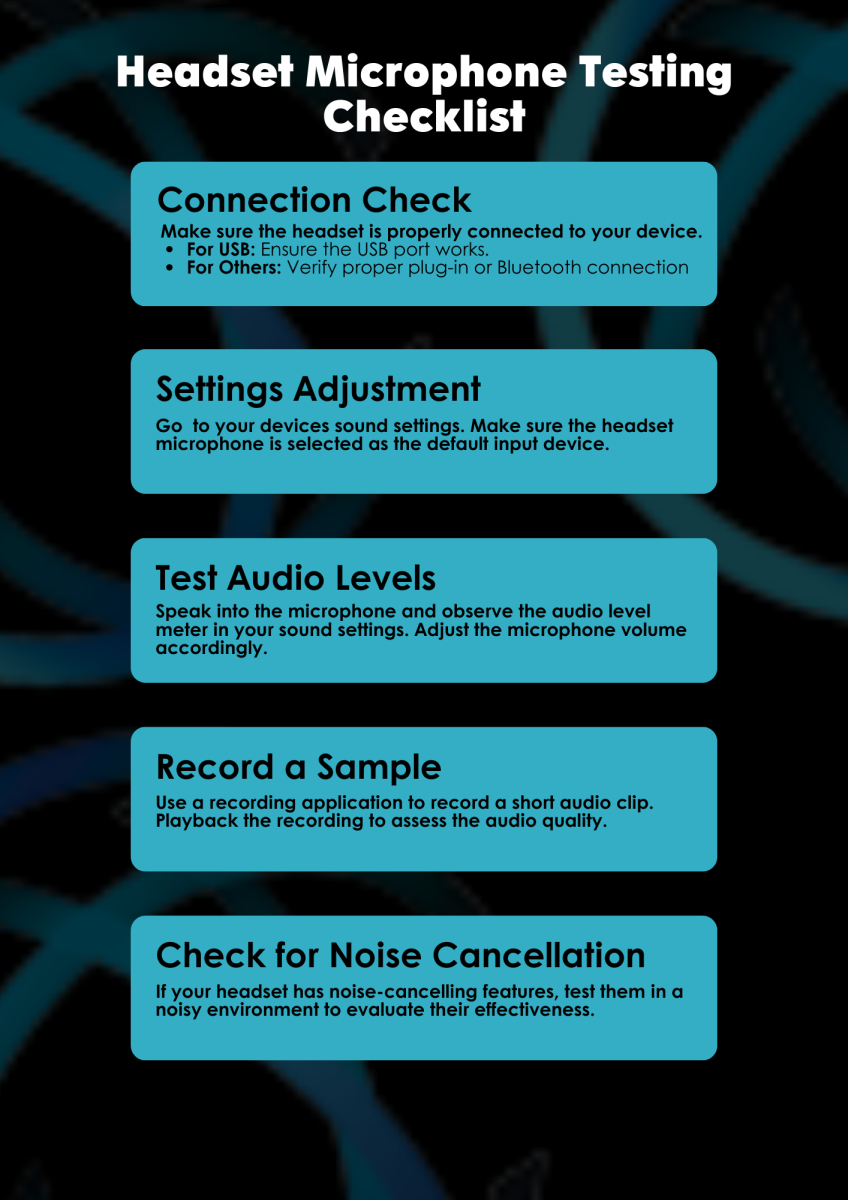The Ultimate Guide to Testing Headset Microphones
Author: Paige
16 November 2023
In today's digitally connected world, headset microphones are more than just accessories; they are essential for effective communication. Understanding and selecting the right headset microphone can significantly enhance your audio experience, whether for professional conference calls, online meetings, or personal use.
In this guide, we'll explore how headset microphones work, their benefits, compatibility, and, most importantly, how to test your microphone for the best performance.
How Do Headset Microphones Work?
Headset microphones are sophisticated devices that combine the functionality of headphones and a microphone into one unit. This dual functionality allows for seamless audio input and output. The microphone captures your voice through a transducer, converting sound waves into electrical signals. These signals are transmitted to your device, ensuring your voice is heard clearly during calls or recordings.
Key Advantages of Using Headset Microphones
- Clear Audio Output and Input: Headset microphones are designed to deliver crisp and clear audio, enhancing both listening and speaking experiences.
- Hands-Free Operation: They allow users to engage in conversations while keeping their hands free for multitasking.
- Noise-Cancelling Technology: Many models come equipped with noise-cancelling features, reducing background noise and improving voice clarity.
- Adjustable Settings: Most headsets offer adjustable microphone settings, including volume control and mute options, for a personalised experience.
Compatibility with Devices
Headset microphones are generally designed to be universally compatible, featuring standard connections like a 3.5mm audio jack or USB. They work well with various devices, including computers, laptops, smartphones, and tablets. However, it's always advisable to check the specific compatibility of the headset with your device.
How to Test Your Headset Microphone
- Check Connection: Ensure that your headset is properly connected to your device. For USB headsets, make sure the USB port is functioning correctly.
- Adjust Settings: Access your device's sound settings. Make sure the headset microphone is selected as the default input device.
- Test Audio Levels: Speak into the microphone and observe the audio level meter in your sound settings. Adjust the microphone volume accordingly.
- Record a Sample: Use a recording application to record a short audio clip. Playback the recording to assess the audio quality.
- Check for Noise Cancellation: If your headset has noise-cancelling features, test them in a noisy environment to evaluate their effectiveness.
- Talk to a Telrexpert: Our team can help you decide what will suit you and your team the best. Our team has over two decades of experience. We can find the one for you.
Advanced Features in Modern Headset Microphones
Bluetooth Connectivity
In modern communication, Bluetooth connectivity in headset microphones stands out for its convenience and efficiency. The latest Bluetooth technology offers rapid pairing with a wide range of devices, from smartphones to laptops, ensuring seamless audio transmission. This wireless freedom is perfect for multitasking in dynamic environments, allowing users to move without the constraints of cords. The advancements in Bluetooth also mean improved battery life and greater range, making wireless headsets a reliable option for both professional and personal use.
Sound Quality and High-Resolution Audio
The core of any headset microphone's appeal lies in its sound quality. Today's headsets are not just about clear communication but about experiencing high-resolution audio that brings every conversation to life. High-resolution audio in headsets provides a richer, more detailed sound profile, perfect for discerning the nuances in music or the clarity in a colleague's voice during a conference call. This leap in audio fidelity means that headsets are now a staple for audiophiles and professionals.
Durability and Build Quality
Durability is a cornerstone of modern headset design. High-quality materials and robust construction ensure that headsets withstand daily wear and tear. From reinforced cables to water-resistant coatings, the focus is on creating a product that performs exceptionally and lasts. This attention to building quality translates to better sound over time and a wise long-term investment for users.
Choosing the Right Headset Microphone for Your Needs
For Professional Use
For professionals, a headset microphone is more than an accessory; it's a tool for effective communication. Ideal headsets for professional settings should offer crystal-clear audio, noise-cancellation features for undisturbed conversations, and a comfortable fit for prolonged use. For those in customer service or remote work, additional features like a mute button, a long battery life for wireless models, and compatibility with various communication platforms are essential.
For Personal Use
The priorities shift when it comes to personal use, whether it's for gaming, casual listening, or staying connected during fitness routines. Gamers might look for headsets with surround sound capabilities and a boom mic for clear in-game communication. Sound quality takes precedence for music enthusiasts, while fitness enthusiasts might prioritise a secure fit and sweat resistance.
Compatibility with Software Platforms
Compatibility is key in an era of diverse software platforms. Headsets used for professional purposes need to be compatible with platforms like Microsoft Teams, Zoom, and various voice recognition applications. This ensures uninterrupted, clear communication, whether in a virtual meeting or dictating notes for voice-to-text software.
Troubleshooting Common Headset Microphone Issues
Resolving Audio Quality Problems
Audio quality issues can often be resolved with a few adjustments. Checking the sound settings on your device, ensuring your microphone is the default input source, and adjusting the microphone's sensitivity can make a significant difference. Additionally, optimizing your environment by reducing background noise can improve audio quality.
Connectivity Issues with Different Devices
Connectivity issues are common but usually easily fixed. Ensuring your device's Bluetooth is on and the headset is in pairing mode is key for Bluetooth headsets. For wired headsets, checking the connection's integrity and the cables' condition can resolve most issues.
Maintenance and Care for Longevity
Regular maintenance can significantly extend the life of your headset. This includes gentle handling, regular cleaning, storing in a protective case, and avoiding exposure to extreme temperatures. For wireless headsets, proper battery management is crucial to preserve their lifespan.

